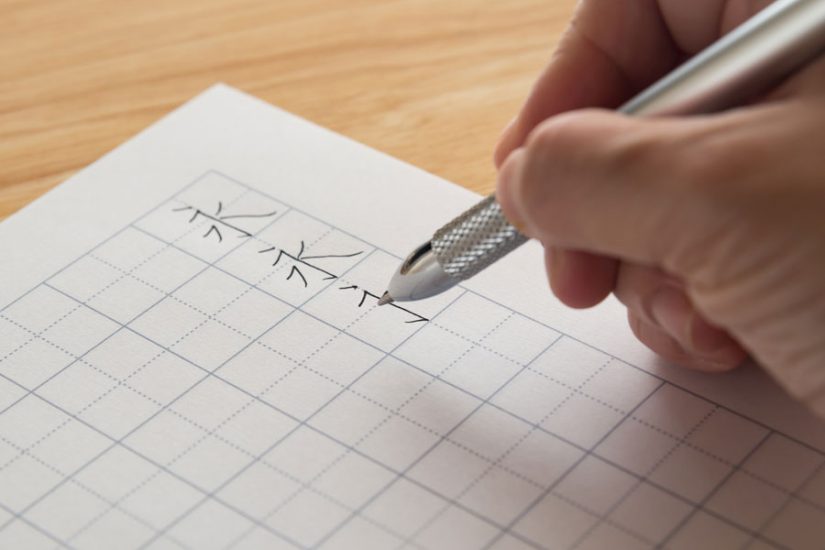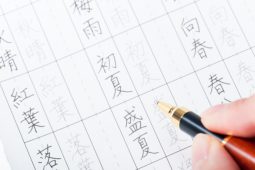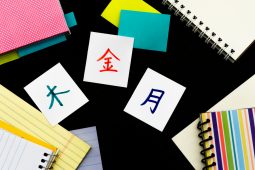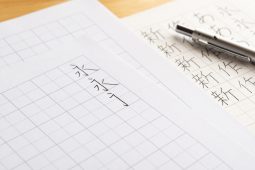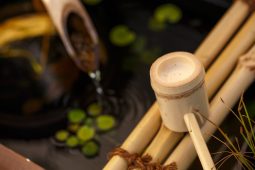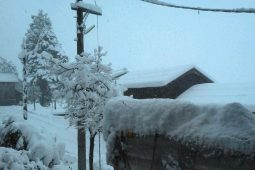Kanji, rather infamously, has a lot of characters to learn (or Hanzi, or Hanja, but I’m using Kanji for specifically the Japanese use of it). The
So I’m going to teach you how to cheat instead.
Kanji is made up of radicals. Technically it’s made of things formally acknowledged as radicals, and symbols you’ll learn to recognise that aren’t supposed to be radicals. Anyway, a radical is a recurring fragment of a larger kanji, which is itself either a kanji or derived from one.It’ll make more sense when you see the examples below. I’m going to show you some simple radicals and kanji. You probably know them already! Not all radicals mean something, but some do — at least more often than not — and by knowing them, you can guess the meaning of an unfamiliar kanji or jukugo. It’s not foolproof, but it helps a lot. It’s sort of like how knowing one Latin language will often let you make a guess at what another one is saying when it’s written down; compared to that, this method is more specific but more reliable. So, let’s get a little list going.
If you ever feel the rules are a bit inconsistent, remember that this article is written in the language responsible for words like ‘plough’, ‘colonel’, and ‘Wednesday, so we’re really just setting a standard.
1. Trees: 木 is the kanji for ‘tree’. 林 and 森 mean ‘woods’ and ‘forest’ respectively, and as you can see, it’s just more of the tree kanji mashed together. This is exactly as far as you can take it. Other kanji using its radical are common, but you can’t really use this to intuit meaning. For example, 校 is a sort of
2. Fish: Limited but extremely reliable. 魚 is fish. 鯨, 鰯, 鱈 respectively mean ‘whale’, ‘sardine’ and ‘cod’. Doesn’t matter, they’re too fiddly to remember if you’re new to Japanese, and too niche. If you see this radical, it’s always about fish. You now have a shortcut to all
3. Birds: Similar to the above. The kanji for bird is 鳥. 烏, 鶉, 鳶 mean, respectively, crow, quail, and black kite. This is another niche but a very reliable one.
4. Illness etc.: The kanji for sickness is 病.It’s a little on the complicated side (so is ‘bird’, honestly), but you don’t have to remember the whole thing! I mean, it doesn’t hurt, because most jukugo for illness names end in 病, or related jukugo contain it earlier, but the really important thing is the little sloping roof it has on top. That gets used for any kanji for bad things that might afflict someone on a personal scale — sort of a theme branching from illness. 症 (symptom) and 疲 (fatigue) are two examples.
5. Metal: The kanji 金 can mean a few things, so apply it with care. It can mean money, gold, or metal. Between those, though, it’s fairly consistent, and you can guess a lot. For example, 鉱 means a mine, 銀 is silver, 金属 is a larger jukugo referring to metals, and so on.
6. Water: 水 means water. It’s then broken up to be almost unrecognisable as the little three lines on the side of, say, 海. 海, 液, 沢, 波, 潟 respectively mean sea, fluid, brook, wave, and lagoon. Those three little lines usually mean a connection to water. Sometimes it’s a bit less direct, like 涙, the charater for tears, or 渦, a whirlpool. With one or two exceptions here and there, though, the connection is there. One of those exceptions is 深, or ‘deep’/’depth’. You can see how they got there from water, but also, it’s not very helpful in this case.
7.Sun/Light: 日 means the sun. 光 means light. The latter isn’t very reliable. The first, you can usually trust, but be aware that the association can be loose. 陽 means yang/bright (in personality mostly), and is part of the larger jukugo for the sun, 太陽. 暖 means warmth, and you can see the sun off to the side. 昼 means noon, and so on. On the other hand, 曜 is used almost exclusively as part of jukugo to denote days of the week. You can get how they arrived at it — English uses ‘day’ as part of every… day of the week, after all — but it can throw you off. Likewise 時, for ‘time’. Use with care. Basically, just remember it also has a time theme sometimes.
8. Rain: 雨 means ‘rain’.Combined with other things, it has more of a general connotation of inclement weather. For example, 雲 is cloud, 雷 is lightning or thunder, 雪 is snow, and 電 is electricity. That last one breaks from the weather theme directly, but you can see how it got there. Similarly, 露 means outside, or exposed; it has the radical for rain over the much more complicated kanji for a road (you don’t need to know this one yet). If it has to do with weather — or references it — and isn’t particularly nice, it probably wears the rain kanji like a hat.
There are, of course, more radicals like you can use this way (I might come back to it some time), but for now, these should be just what you need if you need to — for example — walk through a forest in a rainstorm at noon to eat some sushi. It’s the kind of thing that comes up more than you’d expect. One day you’ll know all the kanji you need to. Until then, pick up some shortcuts to save time.


